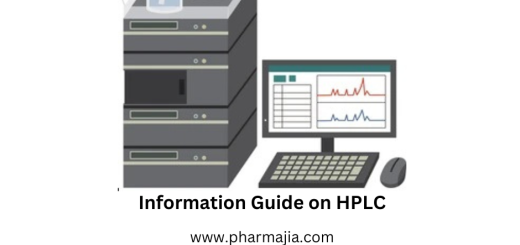Best 40 FAQs on GC For Beginners

FAQs on GC
It includes More than 50 Frequently asked Questions with answers on Gas Chromatography (GC) i.e. FAQs on GC for Beginners :
(Frequently asked Questions) FAQs on GC – Gas Chromatography for Beginners :
- What is gas chromatography (GC)? Gas chromatography (GC) is a powerful analytical technique used to separate and analyze volatile and semi-volatile compounds in a sample.
- What are the basic components of a gas chromatograph? The basic components of a gas chromatograph include an injection port, a column, a detector, Recorder and a data acquisition system.
- How does GC work? GC separates compounds in a sample based on their affinity for a stationary phase inside a column. The sample is injected into the column, and a carrier gas pushes the sample through the column. The separated compounds are then detected and analyzed.
- What types of detectors are used in GC? Common types of detectors used in GC include flame ionization detectors (FID), thermal conductivity detectors (TCD), and mass spectrometry detectors (MSD). Commonly used Detector is flame ionization detectors (FID).
- What is the difference between a packed column and a capillary column? A packed column is filled with a solid support material, while a capillary column is a narrow, hollow tube coated with a stationary phase.
- What are some common stationary phases used in GC columns? Common stationary phases used in GC columns include polyethylene glycol (PEG), polydimethylsiloxane (PDMS), and bonded-phase silica.
- What is a retention time in GC? Retention time is the time it takes for a compound to travel through a GC column and reach the detector.
- What is peak broadening in GC? Peak broadening is the phenomenon in which the width of a peak on a GC chromatogram becomes wider, typically due to band broadening or extra-column effects.
- What is band broadening in GC? Band broadening occurs when a sample band spreads out as it travels through a GC column, leading to peak broadening and decreased separation.
- What is the difference between resolution and selectivity in GC? Resolution is the ability of a GC system to separate two adjacent peaks, while selectivity is the ability of a GC system to distinguish between different compounds in a sample.
- What is the purpose of the injection port in GC? The injection port is where the sample is introduced into the GC system.
- What is split injection in GC? Split injection is a technique in which a portion of the sample is diverted away from the column to prevent overloading the column with too much sample.
- What is splitless injection in GC? Splitless injection is a technique in which the entire sample is introduced into the column to achieve high sensitivity and low detection limits.
- What is the purpose of the detector in GC? The detector detects the separated compounds and generates a signal that is recorded and analyzed.
- What is the principle of flame ionization detection (FID) in GC? FID works by burning the separated compounds in a hydrogen/air flame, producing ions that are detected by a collector electrode.
- What is the principle of thermal conductivity detection (TCD) in GC? TCD works by measuring the thermal conductivity of the carrier gas, which changes when the separated compounds pass through the detector.
- What is the difference between qualitative and quantitative analysis in GC? Qualitative analysis identifies the compounds present in a sample, while quantitative analysis determines the amount of each compound present in the sample.
- What is a standard curve in GC? A standard curve is a plot of detector response versus concentration, used to determine the amount of a compound in a sample based on its detector response.
- What is a calibration curve in GC? A calibration curve is a plot of detector response versus known concentrations of a compound, used to establish the linearity and sensitivity of the GC system.
- What is the purpose of the carrier gas in GC? The carrier gas is used to transport the sample through the GC column and to provide a constant flow rate.
- What is the difference between a polar and nonpolar stationary phase in GC? A polar stationary phase interacts strongly with polar compounds, while a nonpolar stationary phase interacts strongly with nonpolar compounds.
- What is a retention index in GC? A retention index is a measure of the retention time of a compound relative to a set of reference compounds, used to identify unknown compounds.
- What is the difference between isothermal and temperature-programmed GC? Isothermal GC uses a constant temperature throughout the analysis, while temperature-programmed GC uses a ramped temperature profile to separate compounds more effectively.
- What is a backflush valve in GC? A backflush valve is used to reverse the flow of carrier gas through the column, removing non-volatile contaminants and increasing column lifetime.
- What is a guard column in GC? A guard column is a short column placed before the analytical column to protect it from contamination and extend its lifetime.
- What is a derivatization reaction in GC? A derivatization reaction is a chemical reaction that modifies a compound in a sample to make it more amenable to GC analysis.
- What is a retention gap in GC? A retention gap is a short column placed before the analytical column to reduce band broadening and improve separation.
- What is a heart-cutting approach in GC? A heart-cutting approach involves selectively collecting and re-injecting a portion of a GC chromatogram for further analysis.
- What is a comprehensive two-dimensional GC (GCxGC)? GCxGC is a technique in which two GC columns with different stationary phases are connected in series to provide increased separation power.
- What is a headspace analysis in GC? Headspace analysis is a technique in which the vapor phase above a sample is analyzed by GC, allowing for the detection of volatile and semi-volatile compounds.
- What is the difference between gas chromatography and thin layer chromatography? Gas chromatography separates compounds in the gas phase, while thin layer chromatography separates compounds on a stationary phase coated on a thin layer.
- What is the difference between gas chromatography and high performance liquid chromatography (HPLC)? Gas chromatography separates compounds based on their volatility, while HPLC separates compounds based on their solubility and polarity.
- What is a flame ionization detector (FID) in GC? A flame ionization detector is a commonly used detector in GC that detects compounds based on their ability to ionize in a hydrogen-air flame.
- What is a thermal conductivity detector (TCD) in GC? A thermal conductivity detector is a detector in GC that measures the thermal conductivity of the carrier gas, which changes when compounds elute from the column.
- What is a mass spectrometer (MS) in GC? A mass spectrometer is a detector in GC that identifies compounds based on their mass-to-charge ratio and can provide information about their chemical structure.
- What is a flame photometric detector (FPD) in GC? A flame photometric detector is a detector in GC that detects compounds containing sulfur, phosphorus, or nitrogen by measuring their emission of light when burned in a flame.
- What is a nitrogen-phosphorus detector (NPD) in GC? A nitrogen-phosphorus detector is a detector in GC that detects compounds containing nitrogen or phosphorus by reacting them with hydrogen and then measuring the resulting change in thermal conductivity.
- What is a photoionization detector (PID) in GC? A photoionization detector is a detector in GC that ionizes compounds using ultraviolet light and measures the resulting ion current.
- What is a electron capture detector (ECD) in GC? An electron capture detector is a detector in GC that detects compounds containing electronegative functional groups by capturing free electrons and measuring the resulting change in current.
- What is a retention time in GC? Retention time is the time it takes for a compound to travel from the injection port to the detector in GC, and is used to identify and quantify compounds.
- What factors affect retention time in GC? Retention time in GC is affected by the column stationary phase, the temperature of the column, the carrier gas flow rate, and the properties of the compound being analyzed.
- What is peak splitting in GC? Peak splitting in GC is the separation of a single peak into two or more distinct peaks due to factors such as incomplete sample vaporization or incomplete column equilibration.
- What is a chromatogram in GC? A chromatogram in GC is a graphical representation of the separation of compounds in a mixture, showing the time it takes for each compound to elute from the column and the amount detected by the detector.



